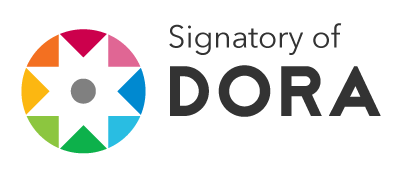Personal environments in network learning: dialectical-didactics relation and reflection from virtual platforms
DOI:
https://doi.org/10.35362/rie600451Keywords:
Personal Learning Environment; Technology; Educommunication; Virtual Learning PlatformsAbstract
Personal Learning Environments (ple) has become a formula for ict application to different teaching-learning processes, from the academic to the most informal. The way in which this environments interact and intertwine define both the pedagogical potential as the underlying learning theories. Tools, resources and applications 2.0 are deployed in a virtual platform way, according to different blending of unions, which will determine their educational utilization.
The communicative models that are assumed also are important pieces in these knowledge generation puzzles. The active and constructive participation of those who are immersed in these environments is an aspect to be considered, due to the importance that sender and receiver roles acquire in any process of generating and assimilating knowledge.
This study seeks to sketch general outlines about general mayor schemes that these ple can follow; analyzing the functions that each virtual platforms assume, the way in which these parts are included in the different learning processes, as well as the intentionality, action and the communication models implemented. It is also proposed a reflection from the implementation of these models, justifying the potential difficulties, as well as critical vision that has an aim to concrete training application of technologic tools: didactics, free software, container-content duality, etc.
Downloads
References
Esteban, M. (2002). «El diseño de entornos de aprendizaje constructivista». Revista de Educación a Distancia, n.º 6. Ediciones de la Universidad de Murcia. Disponible en: http://revistas.um.es/red/article/view/25321/24601, [consulta: febrero de 2012].
Gimeno Sacristán, J. (1982). La pedagogía por objetivos: Obsesión por la eficiencia. Madrid: Morata.
Greca, I. y González, E. (2002). «Comunidades de aprendizaje en desarrollo sustentable». Actas de XX Encuentros de Didáctica de las Ciencias experimentales, pp. 231-238. Universidad de La Laguna (España). Disponible en: http://webpages.ull.es/users/apice/pdf/153-060.pdf, [consulta: marzo de 2012].
Linares, C. y Calvo, S. (2012). «La construcción de identidades digitales en los espacios virtuales desde el enfoque de la educación sexual». Ponencia presentada en las III Jornadas de Campus Virtuales. Servicio de Publicaciones de la Universidad de Oviedo, pp. 93-96. Disponible en: www.google.com.ar
Osuna, S. y González H. (2007). Configuración y gestión de plataformas virtuales. Programa Modular Tecnologías Digitales y Sociedad del Conocimiento. Madrid: uned.
Siemens, G. (2004). Conectivismo: Una teoría de aprendizaje para la era digital. Bogotá. Disponible en: http://es.scribd.com/doc/201419/Conectivismo-una-teoria-del-aprendizaje-para-la-era-digital, [consulta: febrero de 2012].
Stallman, R. (2003) «Por qué las escuelas deberían usar exclusivamente software libre». Free Software Supporter. Boletín de noticias mensual sobre gnu y el software libre. Disponible en: www.gnu.org/education/edu-schools.es.html, [consulta: febrero de 2012].
How to Cite
Downloads
Published
Issue
Section
License
Any authors who publish with this journal accept the following terms:















